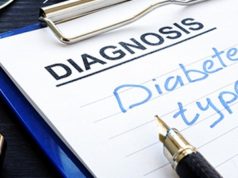Lower mitochondrial oxidative capacity in skeletal muscle of physically active young adults with T1DM
WEDNESDAY, April 18, 2018 (HealthDay News) — Physically active young adults with type 1 diabetes have alterations in mitochondrial ultrastructure and bioenergetics within skeletal muscle, according to a study published online April 18 in Diabetologia.
Cynthia M.F. Monaco, from McMaster University in Hamilton, Canada, and colleagues examined skeletal muscle mitochondrial phenotype in 12 physically active, young adults with type 1 diabetes and 12 controls without diabetes matched for sex, age, body mass index, and level of physical activity. Participants underwent vastus lateralis muscle microbiopsies.
The researchers found that, compared with the control group, participants with type 1 diabetes had significantly lower mitochondrial oxidative capacity, specifically at Complex II of the electron transport chain, with no between-group differences in mitochondrial content. Increased mitochondrial H2O2 emission at Complex III and decreased Ca2+ retention capacity was seen in muscles of those with type 1 diabetes relative to controls. Participants with type 1 diabetes had an increase in the size and number of autophagic remnants in muscles; however, levels of the autophagic regulatory protein, phosphorylated AMP-activated protein kinase, and its downstream targets were similar between groups.
“Alterations in mitochondrial ultrastructure and bioenergetics are evident within the skeletal muscle of active young adults with type 1 diabetes,” the authors write. “It is yet to be elucidated whether more rigorous exercise may help to prevent skeletal muscle metabolic deficiencies in both active and inactive individuals with type 1 diabetes.”
Abstract/Full Text (subscription or payment may be required)
Copyright © 2018 HealthDay. All rights reserved.








